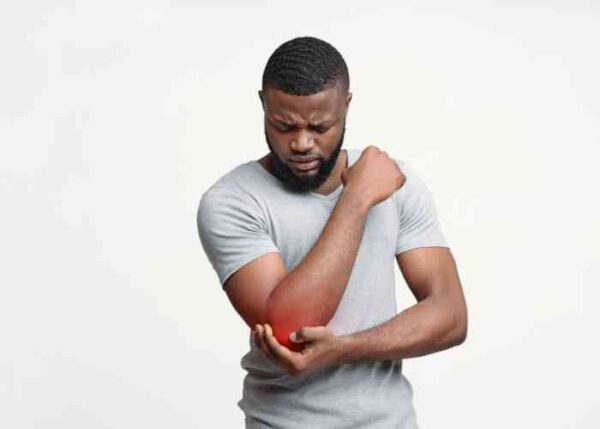Elbow Ligament Specialist

Are you an athlete who participates in sports that might cause you to fall on an outstretched hand? If so, you may be at risk of injuring or tearing your radial collateral ligament (RCL) or your lateral collateral ligament (LCL) in your elbow. RCL and LCL ligament injuries occur most often when trying to catch oneself on an outstretched hand, or from an elbow dislocation. Elbow ligament specialist, Doctor Riley J. Williams provides diagnosis as well as surgical and nonsurgical treatment options for patients in Manhattan, Brooklyn, New York City and surrounding areas who have sustained an injury to the ligaments in the elbow. Contact Dr. Williams’ team today!
What is a radial collateral ligament (RCL) tear?
The radial collateral ligament (RCL) is a strong, short, thin band of tissue that connects from the humerus (upper arm bone) to the radius (one of two forearm bones). The role of the RCL is to provide stability against inner to outer stress on the elbow. The most common way an individual can tear or injure the radial collateral ligament is a fall on an outstretched hand. Attempting to catch oneself when falling this way, places excess pressure on the elbow to the point where one of the three ligaments in the joint, including the RCL, stretches or ruptures. This acute injury can also coincide with elbow joint dislocation. The radial collateral ligament may also be referred to as the lateral collateral ligament (LCL).

What is a lateral collateral ligament (LCL) tear?
The lateral collateral ligament (LCL) complex consists of four major ligaments in the elbow joint: lateral radial collateral ligament (also referred to as RCL), annular ligament, accessory lateral collateral ligament and the lateral ulnar collateral ligament. The RCL is part of the lateral collateral ligament complex. An LCL complex tear can be the result of a dislocated elbow. Athletes playing sports who fall on an outstretched hand most frequently sustain this type of injury. Dr. Riley J. Williams, orthopedic elbow specialist serving Manhattan, Brooklyn, New York City, NY and surrounding areas has extensive experience in radial collateral ligament tears, lateral collateral ligament tears and elbow related injuries. The terms LCL and RCL are often used interchangeable when describing lateral elbow ligament injuries.
What are the symptoms of an RCL tear?
Symptoms will be present at the time of the injury and extend afterward. Individuals in the New York area report the following:
- Elbow pain on the lateral side immediately after a fall
- Clicking sound during elbow extension
- Feeling as though the elbow is catching when extended
- Elbow joint dislocation (severe)
- Difficulty lifting objects with the affected arm
How is an RCL tear diagnosed?
Dr. Williams will inquire about the events surrounding the injury. A traumatic fall on an outstretched hand is the typical circumstance. Such a fall often occurs while playing sports such as soccer, rugby or football, however any fall can cause an RCL tear injury. Dr. Williams’ physical examination will check for pain, swelling, tenderness, range of motion and will include the varus elbow stress test. The varus stress test measures elbow flexion in various degrees to check for elbow instability. Dr. Williams will order imaging tests, such as x-rays, MRIs or ultrasounds to determine his final diagnosis of the existence of a, RCL tear and if other injuries have also occurred. The MRI is the most sensitive test to assess patients for an RCL tear.
How is an RCL tear treated?
Non-surgical treatment:
Non-operative treatment methods are the first line of defense to healing an RCL injury. If the ligament has ruptured or the elbow was dislocated during the event of the injury, surgery may be required. For an RCL injury where the ligament was strained or pulled, resting, splinting, medication and physical therapy have high success rates to healing a frayed or stretched RCL. Physical therapy can help restore strength and range of motion of the elbow as well as strengthen muscles surrounding the elbow to alleviate tension on the RCL. Non-steroidal anti-inflammatory medications along with resting and icing the elbow can help manage pain and inflammation. Dr. Williams may recommend immobilizing the elbow at a 90-degree angle with a splint for a few days to facilitate a decrease in symptoms.
Surgical treatment:
Surgery may be necessary for RCL tears of the elbow. Continued functional limitation following an elbow dislocation or RCL rupture may result in the need for RCL reconstruction. Dr. Williams can both repair or reconstruct the RCL to reestablish normal elbow stability and function. This outpatient surgery is highly effective and allows active patients to return to their normal activities after a few months. Recovery time is typically 3-4 months and will require physical therapy to regain the strength and range of motion of the elbow.
For more information on an RCL tear or LCL tear and the treatment options available, please contact the office of Riley J. Williams, MD, orthopedic elbow specialist serving Manhattan, Brooklyn, New York City, NY and surrounding areas.
